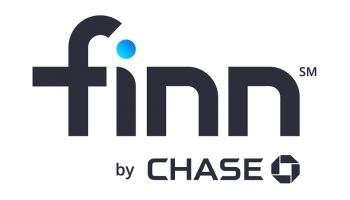What the shutdown of JPMorgan’s Finn can teach banks: Even though you build it, they might not come.
One tactic in the battle for deposits is for banks to launch a digital-only bank or bank brand
- |
- Written by Eric Brandt, senior market analyst for D3 Banking Technology

As new competitors continue to enter the financial services landscape, the battle for deposits is becoming increasingly important – and increasingly challenging. One tactic that has recently gained traction in this fight is for banks to launch a digital-only bank or bank brand.
The reasoning behind such a move makes sense, as digital has quickly become most consumers’ preferred channel. While branches still serve an important role in the banking relationship, consumers typically prefer to complete easy tasks or quickly access information from the convenience of their smartphones. And, a digital brand provides an effective avenue for institutions to expand beyond the limits of their existing geographic reach with little overhead. However, banks should heed warning from JPMorgan’s shutdown of Finn – just because you build it, does not mean they will come.
JPMorgan introduced its digital only brand, Finn, in June 2018 in an attempt to attract more Millennial and Generation Z customers. Finn offered a separate digital app and access to a limited network of branches. However, the initiative did not last long. This summer, about a year after its launch, JPMorgan announced that that Finn was shutting down and all funds would be transferred to traditional Chase accounts.
A close examination of Finn provides clues into what might have really gone wrong. Nothing the app offered was substantially different or unique from what was offered via Chase’s original app. There was no value add or differentiator significant enough to convince customers to go through the hassle of downloading, setting up and using a separate app and brand.
JPMorgan assumed that Millennials and Gen Z would flock to the app for its attractive UI and ‘cool’ factor. Let this be a cautionary tale of innovation for innovation’s sake.
To succeed in a digital only venture, banks must do a better job of leveraging data to know and understand what their customers want from and value in their digital banking interactions. Banks have much more holistic information about their customers than any fintech, retailer or even large technology company such as Amazon. They know their customers’ credit scores, loans, investments, and can view all of their transaction data.
However, this information is often scattered across several dated systems that don’t talk to one another, preventing banks from effectively harnessing this power. To correct this issue, banks must invest in a modern, streamlined platform approach that simplifies the back office and makes data more easily digestible.
When banks have a comprehensive view of their customers and gain greater insight into their preferences and behaviors, they can use that information to differentiate and offer the tools and functionality that entices customers to engage with a digital only brand. For example, the data could demonstrate that customers want more comprehensive savings and budgeting tools, including tips for paying off student loans in the smartest way. Or, the data might show that customers want more advanced payments options, access to conversational banking or even more robust reward programs. Where the data leads, banks would be apt to follow.
In addition to helping banks better understand how to make a digital brand most successful, more intelligently leveraging data ultimately enhances overall customer service and positively contributes to banks’ bottom lines. For example, if a banker can see that a customer has owned their vehicle for around 5-6 years, it might be time to proactively send a pre-approval and information on the institution’s current rates.
Taking this a step further, maybe the bank can use geofencing to be alerted when a customer is at a dealership and then push information about auto loan financing at the most relevant time. Or, maybe a banker notices a customer has recently paid off their student loans, freeing up capital that has been accounted for many years prior. This could be an opportune time to share details around different savings or investment accounts, and pros and cons of each.
While digital only brands can be a strong tool in the increasingly competitive war for deposits, they won’t succeed without a significant differentiator, such as newfound levels of personalization or additional features and functionality.
Banks must leverage their greatest asset, their data, to understand what is needed to make a digital brand work. Simply adding an attractive interface without enhancing the capabilities or service simply won’t cut it – just ask JPMorgan.
Tagged under Management, Financial Trends, Mobile, Online, Tech Management, Cards, M&A, Feature3, Fintech, Feature, Lines of Business, Retail Banking, Technology, Revenue, Branch Technology/ATMs,













